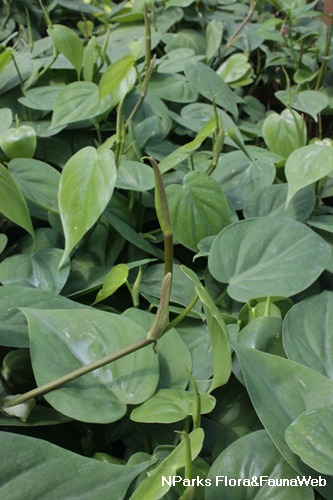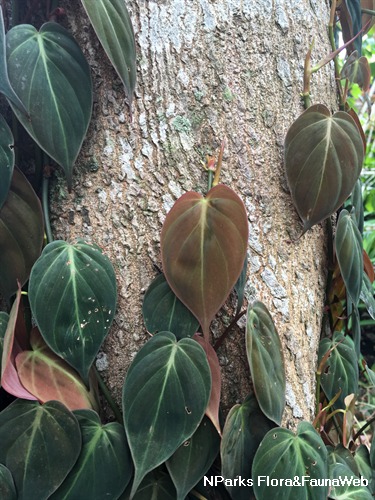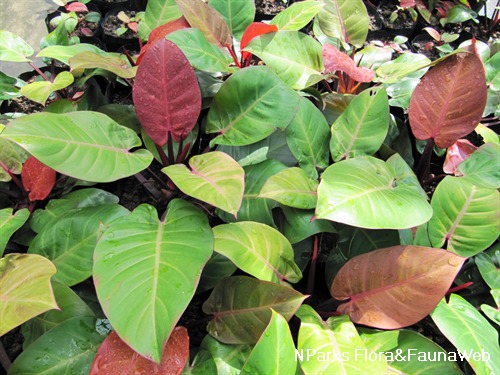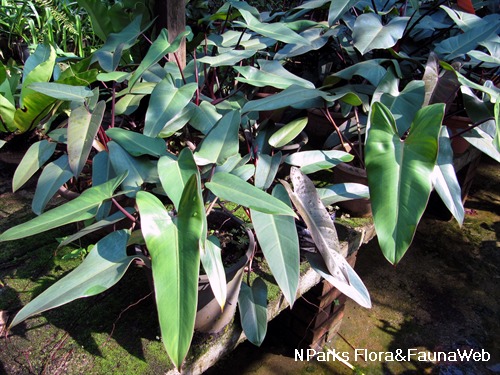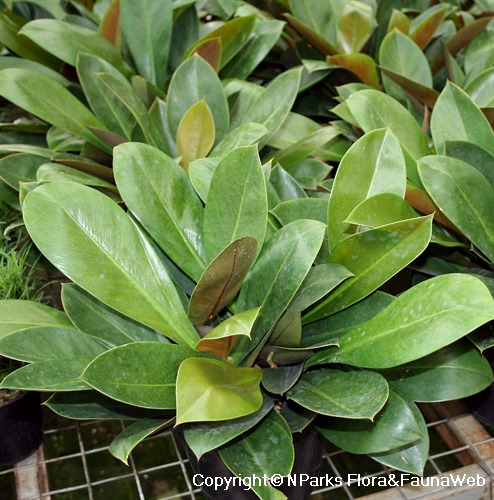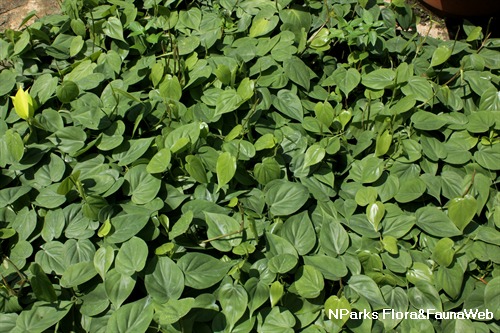
Back
Philodendron hederaceum (Jacq.) Schott
| Family Name: | Araceae |
| Common Name: | Heart Leaf Philodendron |
Name
Classifications and Characteristics
| Plant Growth Form | Climber |
|---|---|
| Mode of Nutrition | Autotrophic |
Biogeography
| Native Distribution | Central America and the Caribbean |
|---|---|
| Native Habitat | Terrestrial |
| Preferred Climate Zone | Tropical |
| Local Conservation Status | Non-native (Spontaneous (Casual)) |
Description and Ethnobotany
| Growth Form | An evergreen hemi-epiphytic vine, usually found growing on trees or rocks, can reach to a length of about 3 - 6 m. |
|---|---|
| Foliage | Heart-shaped leaves, measuring about 10 - 20 cm by 8 - 15 cm, leaf stalk measuring about 4 - 7 cm long, pointed tips. Juvenile plants have leaves blades that are velvety and red on the underside. The character is lost after the plant matures. |
| Flowers | Yellowish-green spathes of white flowers (spadix) occasionally blooming, spathes measuring about 5 - 6 cm, spadix cylindrical in shape and pistillate part measuring about 4 - 5 m long. Flowers are sterile and do not set seed. |
Landscaping Features
| Desirable Plant Features | Ornamental Foliage |
|---|---|
| Landscape Uses | Parks & Gardens, Vertical Greenery / Green Wall, Interiorscape/ Indoor Plant |
| Usage Hazard - Cons | Toxic Upon Ingestion, Irritant - Sap |
Plant Care and Propagation
| Light Preference | Semi-Shade |
|---|---|
| Water Preference | Moderate Water |
| Rootzone Tolerance | Moist Soils, Well-Drained Soils, Easy to Grow |
| Maintenance Requirements | Moderate |
| Propagation Method | Stem Cutting (Herbaceous) |
Foliar
| Foliage Retention | Evergreen |
|---|---|
| Mature Foliage Colour(s) | Green |
| Foliar Arrangement Along Stem | Alternate |
| Foliar Attachment to Stem | Petiolate |
| Foliar Venation | Pinnate / Net |
| Foliar Margin | Entire |
Image Repository
Others
| Master ID | 32141 |
|---|---|
| Species ID | 6547 |
| Flora Disclaimer | The information in this website has been compiled from reliable sources, such as reference works on medicinal plants. It is not a substitute for medical advice or treatment and NParks does not purport to provide any medical advice. Readers should always consult his/her physician before using or consuming a plant for medicinal purposes. |

